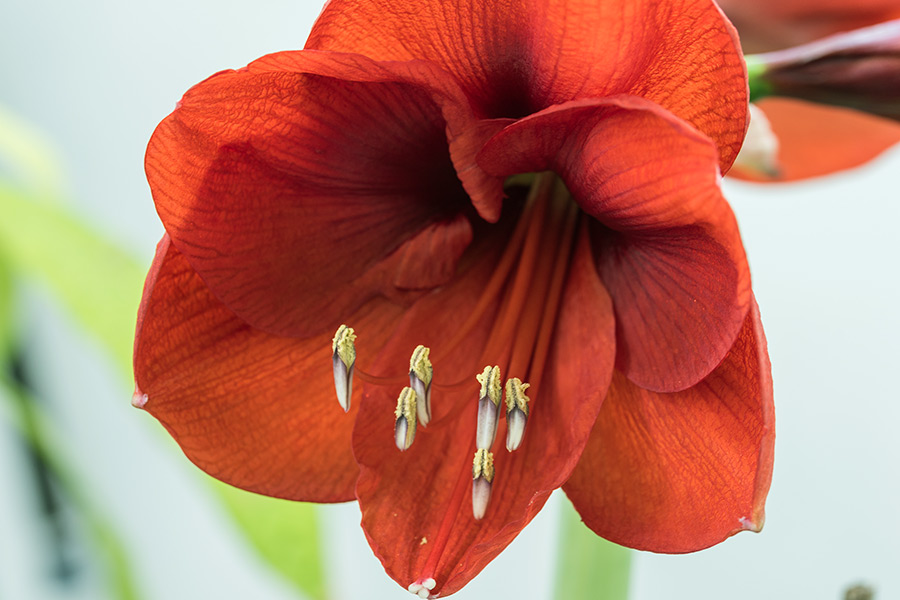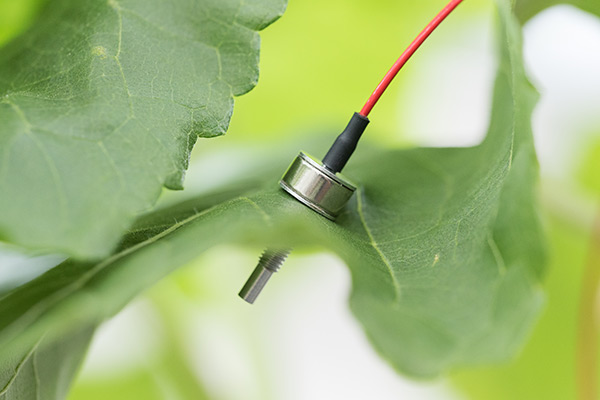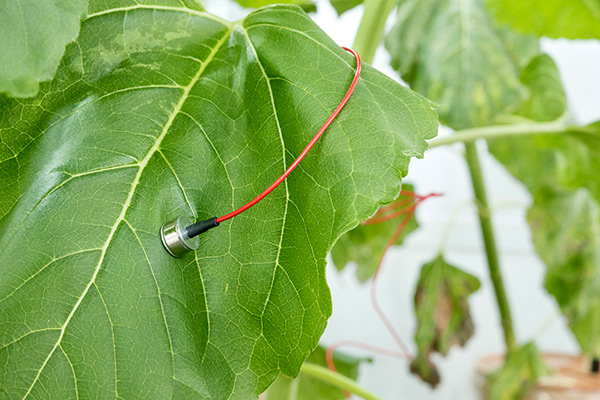News
- Non-invasive assessment of plant-water relations: a new publication of Dr. Paulo Cabrita
The use of non-invasive methods — that can give us a more realistic picture of how plants actually live and react to the environment surrounding them — is often limited by plants morphology and structure. In his latest publication on using the non-invasive leaf patch clamp pressure (LPCP) probe, Dr. Paulo Cabrita showed how this method, so far used to monitor plant water status continuously, can also be used to study changes in the air pressure inside plant leaves.
Basically, the LPCP output is the pressure signal resulting from the plant’s response when a small leaf patch is clamped by two magnets. That is, by having a small pressure transducer in one of the magnets one can detect how much of the pressure exerted by the other magnet was transmitted through the leaf patch. That transmission of pressure through the leaf patch is, thus, a function of the structural components of the leaf, namely, the presence of water or air inside its tissues. Therefore, one assesses the leaf water status and, ultimately, the plant, by looking at how the transmission of pressure occurs within its tissues. In the plant species studied so far, the diel pattern of the LPCP output follows the changes in the leaf turgor pressure inversely. That is, the higher the LPCP output measured the lower the turgor pressure, hence, water content, in plant cells will be.
However, as Paulo Cabrita showed, in species in which the leaves are mostly filled with air — filling large canals, called aerenchyma, like in the genus Hippeastrum — the LPCP output follows the changes in air pressure inside those leaves inversely. In these species, the transmission of the pressure applied by the magnets clamping a leaf patch is dependent on the air pressure in the leaf aerenchyma.
Apart from the novelty in presenting a new experimental approach to monitor changes in air pressure inside plant leaves, these results also highlight the importance of knowing leaf anatomy and structure while using methods that are based on the mechanical properties of plant cells. By presenting a mathematical model then confirmed by experimental data, Paulo Cabrita showed that the behavior presented by Hippeastrum plants — although opposite to that of banana — did not reflect a diurnal decrease in turgor pressure and a possible threatening water status, but rather the diel pattern of changes in leaf aerenchyma air pressure. Knowing that leaf aerenchyma air pressure depends on the gas exchanges occurring during photosynthesis through transpiration, one can, thus, measure the plant water status in these species by looking at changes in the aerenchyma air pressure, non-invasively and continuously. Paulo Cabrita’s results are also in line with the physiological role of leaf aerenchyma in Hippeastrum species, considering their natural habitats — that is, on facilitating gas transport and light scattering in leaves, thus contributing to the photosynthetic efficiency of these plants under adverse conditions.
Paulo Cabrita’s article “Non‐invasive assessment of the physiological role of leaf aerenchyma in Hippeastrum Herb. and its relation to plant water status” was published in June 2022 in Planta.
More Info
Cabrita, P. (2022) Non‐invasive assessment of the physiological role of leaf aerenchyma in Hippeastrum Herb. and its relation to plant water status. Planta (2022) 256:19. PDF of the publication









